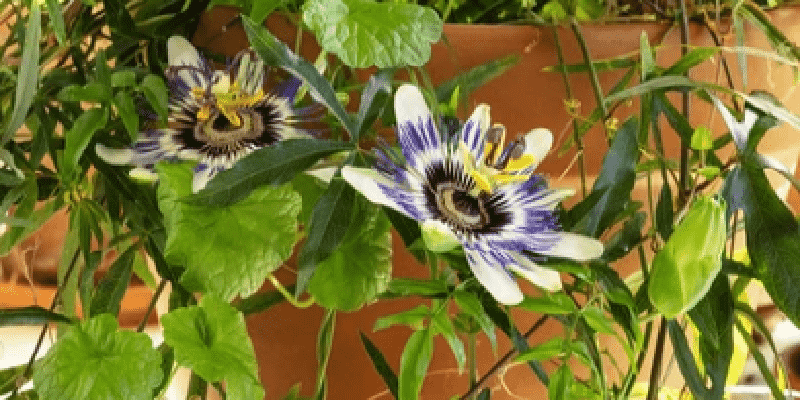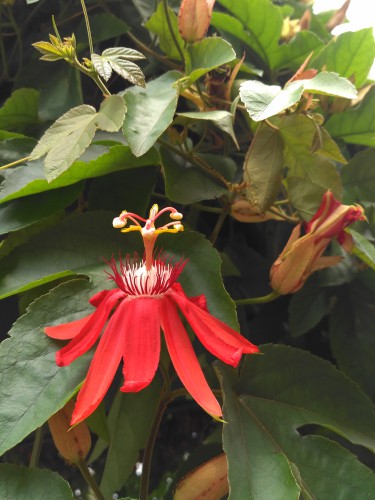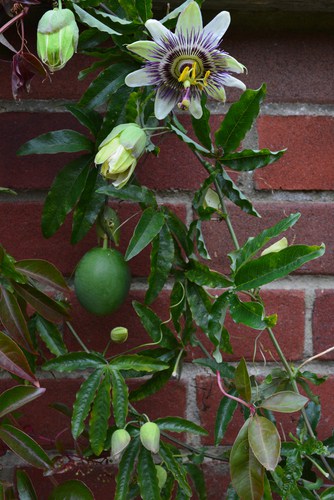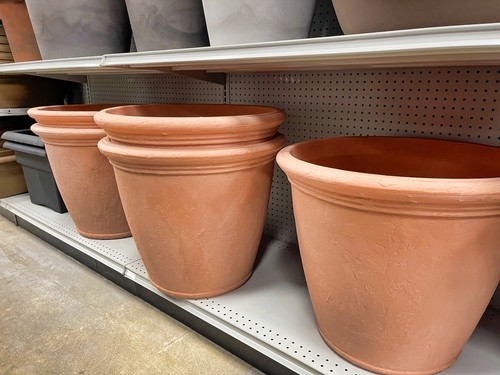
Growing passion flowers in pots and containers
Our site is reader supported, this means we may earn a small commission from Amazon and other affiliates when you buy through links on our site.
Passion flowers grow quite happily in pots and other containers and it’s a great alternative for those who can’t plant them in the ground or those who want to grow some of the more tender varieties in greenhouses and conservatories. Another advantage is planting them in this limited space stops them from getting out of hand and lets you fully control the environment they grow in, as they are notoriously vigorous. Plus, you can bring them indoors in the winter months.
Here’s my guide on how to grow passion flowers in pots like I have done myself.
Choosing a variety
You can grow all varieties of passion flowers in pots from the frost hardy Passiflora caerulea, Passiflora racemosa, Passiflora alata which is perfect for colder parts of the country, including most of the UK and the USA. Growing in pots is also perfect for the more tender varieties which need some winter protection, such as Passiflora edulis, which produces edible fruit.
Choose your pot
You can use a pot of any material for growing your passion flower. Stone and terracotta pots are of natural materials and are heavier than plastic ones. This adds some weight and stops the pot from tipping over if the plant grows really tall and becomes top heavy. On the other hand, this heaviness makes the pot more difficult to move around. Plastic pots may need some weight added to them in the form of some rocks put into the bottom of them.
Passion flowers like well-drained soil so your pot needs enough drainage holes in the base for excess water to run out from. It’s easier to make additional holes in a plastic pot than in one of the denser natural materials.
Choose a pot that’s about just a little wider than width of the passion flower root ball. It’s better to start with a smaller pot and pot them up every couple of years than put a small plant in a large pot as this can lead to root rot. Also, don’t forget to add crockery to the bottom of the pot to stop the draining holes from becoming clogged up.
Prepare your pot
Afer adding some crockery to cover the drainage holes fill the pot up with some all-purpose potting soil that’s rich in nutrients. John Innes No 3 potting compost is good for this as it holds moisture better but I like to add some horticultural grit to improve drainage. Add in some ericaceous compost that will increase the acidity of the soil, so you have slightly acidic soil. Consider putting a layer of mulch on the surface to help retain moisture and deter pests. I have used small stones in the past to cover the surface of teh soil as it looks good and helps keep the soil moist for longer.
Plant the passion flower plant
Before you lift out the plant from its original container, check how deeply it’s planted there. You want to plant it to the same depth in your pot. If the root ball is dry, soak it for about 30 minutes before planting. If you didn’t notice the depth it was planted at, plant the passion flower so that the top of the root ball is about 0.5cm below the surface.
Water the plant in well after planting, being sure to check that excess water is draining through the pot and coming out the bottom.
Care for your plant
The basics of caring for your potted passion flower are the same as those you would plant in the garden. I go into detail for this in Passiflora caerulea – growing and caring for passion flowers but they need a sunny position or spatial shade but need around 5-7 hours of sunlight to grow well.
Pruning
I have discussed pruning passion flowers in detail here. Passion flowers don’t need pruning every year like some plants and can grow well if not pruned at all. However, when grown in pots, I like to just prune them back lightly after flowering to within about two buds of the previous year’s stems leaves some of the current year’s growth to maintain a nice framework.
Special care for potted passion flowers
Potted plants do need some extra attention to get the most out of them and protect them in winter. They need to be watered more often as the soil dries out in the pot. Check the dryness of the soil more frequently than you do in the garden and water appropriately. As usual, it’s better to use rainwater than tap water for this.
If it seems as if your passion flower plant is growing weakly and looking spindly, I recommend first feeding it with a general purpose fertiliser. This is best done in spring as it starts its growth spurt. Consider feeding the plant every four weeks or so as the nutrients from a dose of fertiliser often wash out through the soil through the bottom of the pot.
Winter protection
If you place your passion flower pot outside in the warm summer months, you need to bring it inside for the winter. Putting it into a greenhouse or a conservatory is best, though it will flourish in your living room. If you have one in a large pot that cannot be moved, wrap the pot in some bubble wrap of lagging to protect the roots from hard frost.
If you have any problem getting your passion flower to flower, check out the guide on why passion flowers sometimes don’t flower here, I also have a guide on passion flower pests and diseases as well as other passion flower problems.
Another fairly common problem with passion flowers is wilting or yellowing leaves, check out this guide on why your passion flower might have yellowing leaves or wilting foliage.




